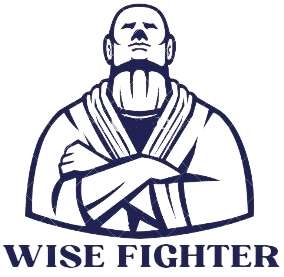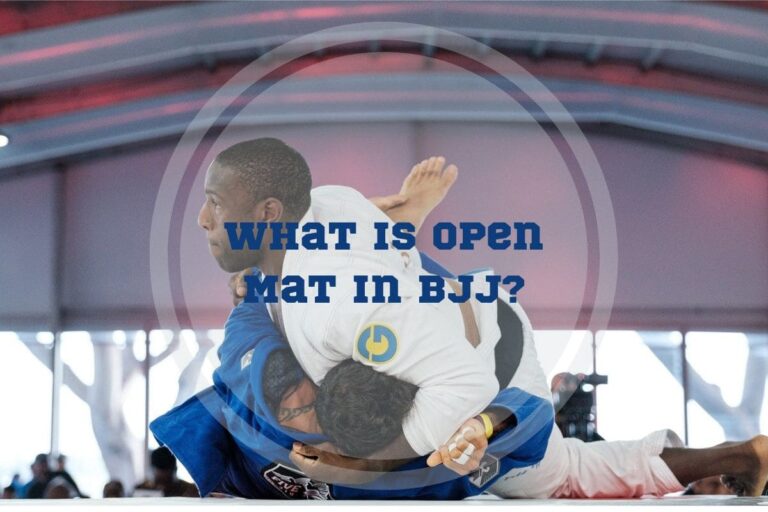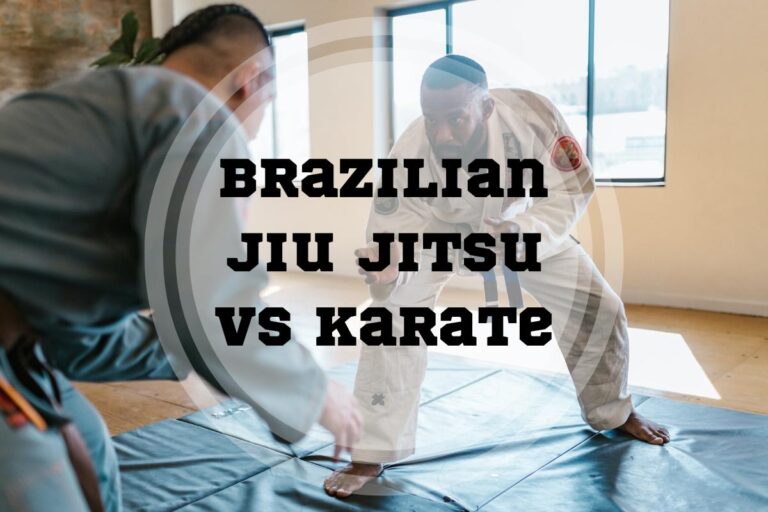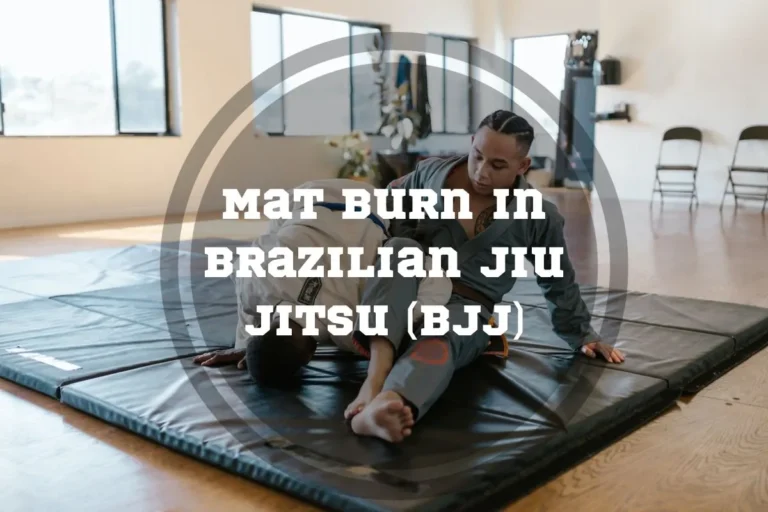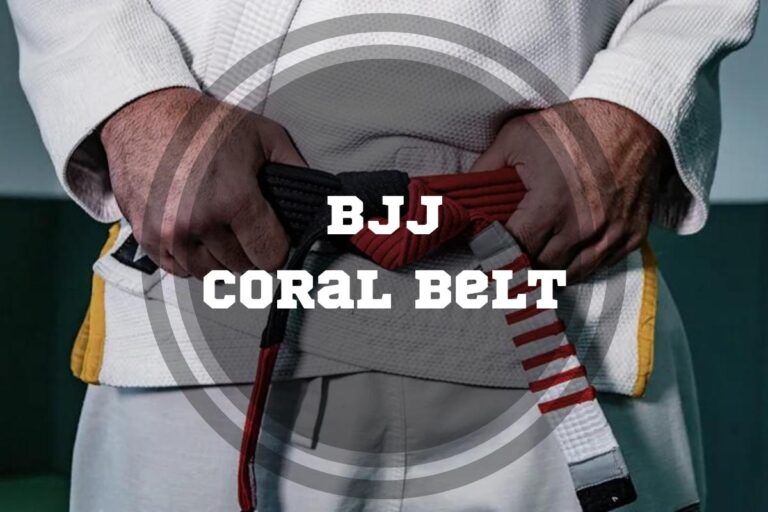BJJ Mount Positions And Fundamentals: A Guide to Enhance Your Ground Game
Finding yourself overwhelmed in mount position and clueless on your next move? By understanding the BJJ mounts you can safeguard yourself and increase your odds to escape and subdue your opponent or attacker. Did you know that 85% of all violent attacks and fights result in being taken to the ground in real self-defense situations? In this guide, we cover all the elements that encompass the BJJ mount position, be it for self-defense, on the mat, or in competition.
What are the types of Mount Positions in BJJ?
Types of mount positions in Brazilian Jiu-Jitsu (BJJ) include the Full Mount, High Mount, Technical Mount (S-Mount), Modified Mount (One-Knee Mount), Back Mount (with hooks), and Reverse Mount (Back Mount with seat belt control). These positions provide varying degrees of control and opportunities for submissions.
What are the mounts in Brazilian Jiu Jitsu?
If you find yourself in mount often this indicates you’re making several mistakes leading your opponent to capture this position on you. This can be remedied by developing a strong guard in which they can’t establish this position. A common mantra that all BJJ Dojos will preach to their students is “Have a guard no one shall pass”. Though easier said than done right?
How to escape Mount BJJ? Techniques such as the Trap and Roll, Shrimp, Upa, Knee-to-Elbow, or Kipping Escape are used. Each escape varies through the use of leverage, hip movement, and timing to create space, regain guard, and counter the position. This is vital for maintaining control and turning the tide.
If you find yourself mounted there are still several options still available to escape despite making this mistake. There are various mount positions that are the cornerstone of control and dominance.
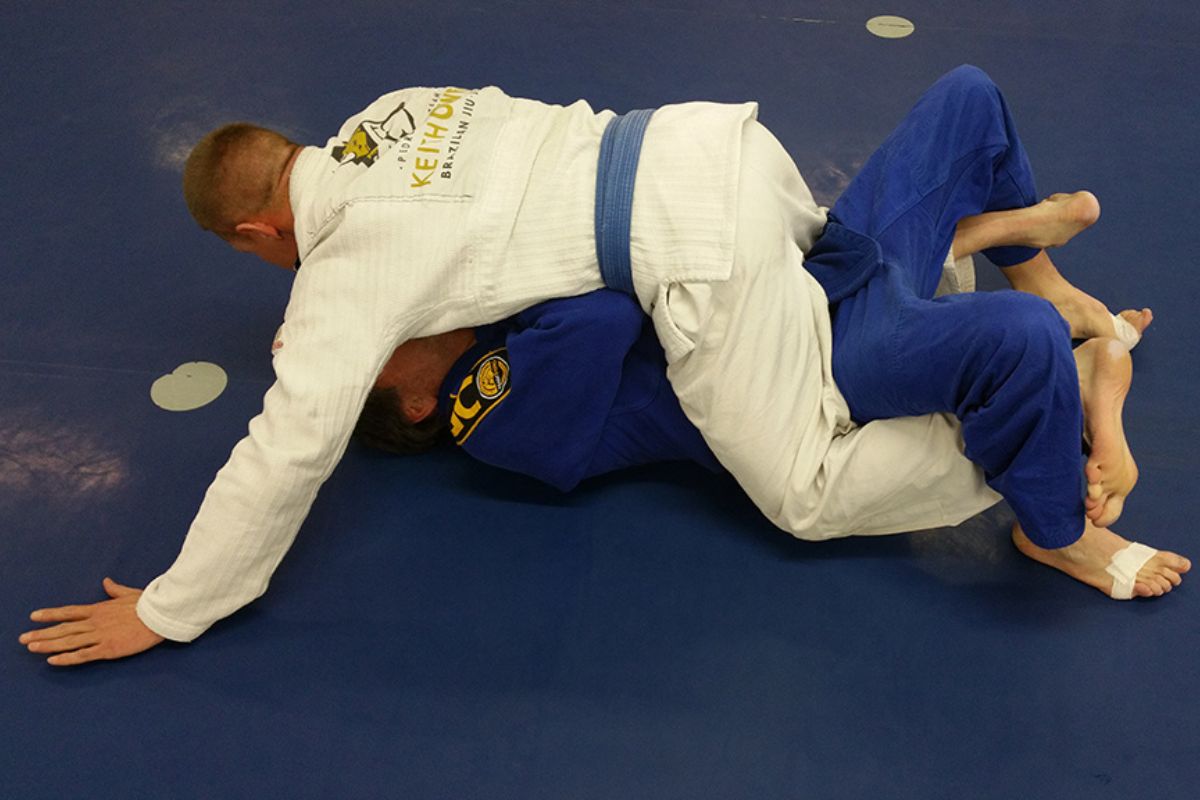
The main types of mounts in Brazilian Jiu Jitsu
From the iconic Bjj Full Mount to several more interesting and varied positions such as the “S” Mount and even the Grapevine Mount. You can greatly enhance your game by understanding these basic BJJ positions. BJJ mount positions that offer distinct escapes and potential submission opportunities.
1. Mount
The most common mount you will learn as a beginner is the “Mount”. This is where one practitioner sits on top of their opponent, positioning their knees near or on the opponent’s torso and their feet beside the hips. The top position applies pressure which immobilizes the opponent’s upper body and restricts their movement, granting the person control of their opponent’s arms and offering a great degree of dominance over them.
Additionally, this gives them the ability to strike, submit, use joint locks, and chokes, or transition to better positions. This position demands a stable base to prevent escapes while offering strategic opportunities for attack or transition into other positions.
How to prevent Mount
There are several ways to escape to Mount. The most common you will utilize are the following fundamental escapes, especially as a beginner.
Trap and Roll Escape
This involves bridging your hips off the ground, forcing your opponent to post their arm on the floor. This creates an opportunity to trap their arm and leg on the same side to roll them over your shoulder. The key takeaway of this move is to use your hips to disturb their base, enabling you to reverse the position.
The escape relies on timing, leverage, and explosiveness to roll your opponent. Though once rolled your opponent will likely try to place you into their closed guard. Here you can begin to work and pass their guard.
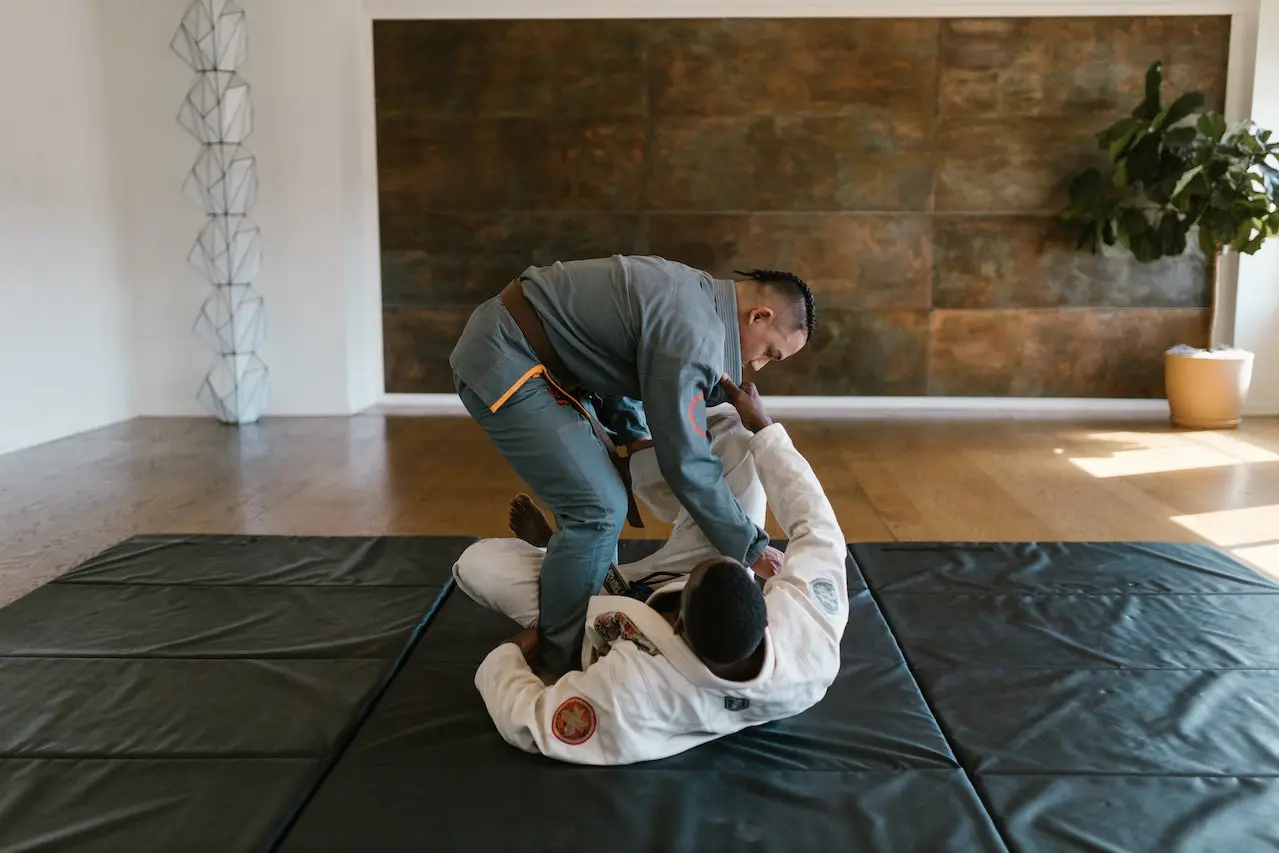
Shrimp Escape
By bridging and angling your body to the side, you will establish frames with your arms against your opponent’s hips. Then as the name implies you will “shrimp” using your hips out from under your opponent to form the shape of a shrimp or cocktail prawn with their body, to create space between you and your opponent. This allows you to move your hips out from under them and potentially recover your guard. This is done by feeding your knee between your opponent’s thighs and establishing a butterfly hook or improving your position to half guard and possibly transitioning to an even better position such as closed guard.
The shrimp escape emphasizes hip movement, timing, explosiveness, and technique to create openings for escaping and transitioning. However, those who use this in MMA or in self-defense situations should be wary of potential strikes from their opponent when they begin to use this escape as their arms will be briefly away from protecting their head.
Upa Roll Escape
This is usually done when your opponent reaches for your lapel or clothes. It involves trapping their arm and bridging your hips off the ground while explosively rolling over to one shoulder. The aim is to catch your opponent off-balance when they shift their weight to the side you wish to roll them, namely when they try to remove the grip you have on their arm. This escape disrupts their control, allowing you to reverse the position and regain a more favorable ground position or enter the closed guard position.
The Upa escape relies on good timing, your opponent’s momentum, and quick movement to create an opportunity for escape very similar to the trap and roll escape.
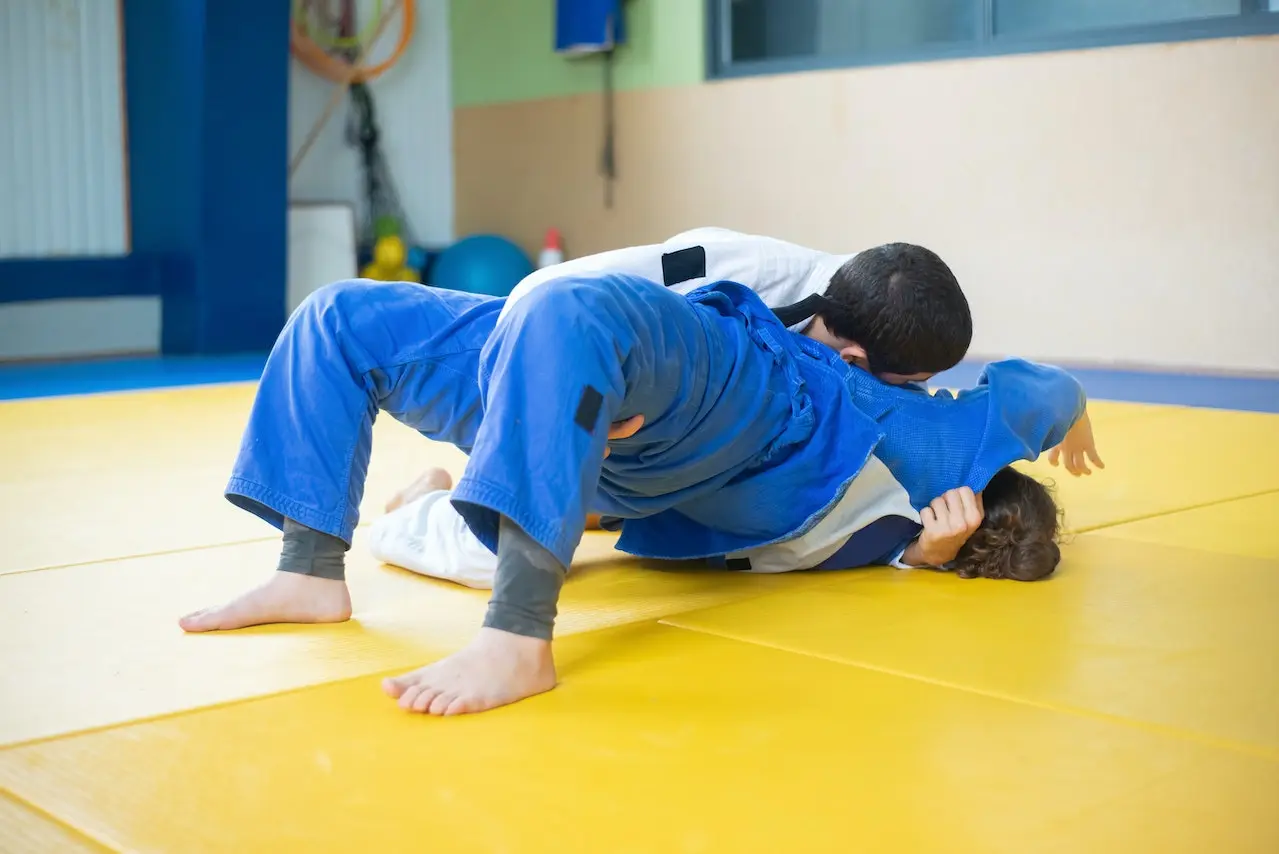
Knee-to-Elbow Escape
By bridging and angling your body to your side you will push your opponent’s knee to the side with one hand and create space with your elbow on the opposite side, you can create enough room to recover your guard.
This escape emphasizes controlled movements, positioning, and strategic use of your elbow and knee to come which are brought closer together. Thus creating an opportunity to enter half-guard and then ultimately recover to closed guard. This works best when your opponent’s head is past and over your own head when they reach to grab your head as their weight is not fully loaded on your hips.
Kipping Escape
It’s crucial to tuck elbows in and not have them flared out when attempting this escape. The goal is to create space by using a jackknife-like bridge motion that briefly separates your hips from your partner’s. Your hands function as frames and push on your opponent’s hips, while the wedge formed by your legs maintains distance. By coordinating this action and angles, you can initiate a kipping motion, turning to the side and creating an opening to escape or enter into leg locks.
This escape emphasizes controlled movements, positioning, and strategic use of your body and a kipping-like motion to escape or enter into a series of leg lock attacks and potential sweeps.
2. S Mount BJJ
This is where one practitioner situates their leg across the opponent’s chest while bending the other leg, forming an “S” shape configuration around the isolated shoulder of their opponent’s arm. This transition from the mount grants the practitioner on top increased stability and control, making it easier to set up various submissions, particularly armlocks.
How to prevent “S” Mount
When caught in the “S” mount you will need to frame the escape and protect your arm by keeping them closer to your body as your opponent will likely attack the arm nearest to their hip-hip. In addition to this, you need to shift your hips and legs aiming to get your hips in line with your opponents back into mount. By framing your opponent and executing a “Knee to Elbow escape” you can begin to escape this position and possibly enter into leg lock submissions.
3. Technical Mount BJJ
Much like the “S” mount, this involves placing your foot by your opponent’s hip flat on the ground. This is typically done when your opponent is on their side or shoulder. On the other hand, the S mount is characterized by crossing that leg under the bottom arm, resembling the setup for a mounted armbar. While these positions share some similarities, they have differences. In the technical mount, your opponent is typically up on their side, while in the S mount, they are usually flat on their back.
These differences make the technical mount more suited to potentially taking the rear mount BJJ. It offers a greater array of strategic applications and BJJ submissions from mount
How to prevent the Technical Mount
To defend from this position, the initial priority when caught is preventing the opponent’s arm from sliding underneath your neck, which gives them control over your shoulders. To achieve this, lower your ear towards the ground and keep your head down tightly. The top arm works to protect against this.
The first escape involves creating space for your arm to slide beneath your body. Lift your hip to retract your elbow, forming a wedge behind your opponent’s ankle near their Achilles tendon. Push your hips back to create space, then reinsert your leg, choosing between the top or bottom based on the situation. If possible, opt for the top leg, adjusting your grip for better control.
When the top leg is inserted, shift your grip over for better leverage. Position yourself perpendicular to their hamstring. Drive your arm beneath their body, pushing with your knee, which helps to establish a half-guard-like position. From here, clearing their legs becomes a matter of efficient technique, aided by your grips and angles of your body. Sounds confusing right? This video will better showcase the technique as well as additional techniques.
4. Grapevine Mount
The “Grapevine Mount” is where a practitioner wraps their legs around their opponent’s legs in the top mount BJJ position, similar to how vines might wrap around a tree. This technique is often used to control the top position of larger opponents, where you encircle your opponent’s legs with your legs, preventing them from escaping or turning away from you. Leg grapevines help you maintain top control and set up various submissions namely Ezekiel chokes or no-Gi variations of the Ezekiel.
How to prevent Grapevine Mount
To prevent getting grapevined by your opponent. You will need to break off the hooking grapevines. This can be done by moving your legs in a circular inward-like motion and placing your freed legs close to your own hips to prevent them from re-establishing them. From here you can begin to execute one of the fundamental BJJ mount escapes.to begin your escape as they are low on your body already.
5. Reverse Mount BJJ
The reverse mount isn’t a very well-recognized position in BJJ. The reverse Round Mount position in BJJ generally refers to the top practitioner being in a dominant position much like full mount but instead reversed where they face their opponent’s feet. Sitting on their opponent’s torso creates a lot of pressure on the diaphragm while holding under their opponent’s knees. This position is used for a series of leg attack entries, particularly kneebars, heel hooks, and toe holds.
How to prevent Reverse Mount
Your first order of business is to get your legs free and keep them on the ground to prevent your opponents from holding your legs once again. This is done by rapidly kicking your legs back and forth to break their hold on your legs. Your opponent will at this point try to attack for a toe hold. This is where you will push their hip forward with your arms, retract your leg out from under him and escape. However, in most cases, they will transition to side control. By Shrimping out you and framing off their hip you can re-establish your guard when they do so.
What is the BJJ full mount?
You might be familiar with the term “mount”. However “Full mount” in Jiu-Jitsu is a close variation. This is where the position involves you being positioned higher up on your opponent’s torso. The position ideally prevents their elbows from touching the mat and grants better control for submissions and strikes. Both positions offer significant advantages in Jiu-Jitsu, although the full mount minimizes your hips from being unbalanced by your opponent, reducing the effectiveness of their escape attempts through bridging.
Frequently Asked Questions About BJJ Mount Positions
What is the most effective Mount in BJJ?
Although the mount position is recognized as highly dominant, it’s important to note the various mount variations, each presenting distinct advantages in grappling. As your opponent’s movements change, adapting your mount becomes essential. You might need to switch through multiple variations to maintain control, transition effectively, and execute your techniques.
Among these variations, the technical mount and full mount stand out as they provide a potential pathway to your opponent’s back or minimize their ability to escape by being off their hip line.
There are several Brazilian jiu-jitsu positions that are widely regarded as superior, the mount being regarded very highly as it significantly limits your opponent’s ability to escape. All while maximizing striking and submission potential. Though in BJJ back mount is the king of all positions and there is a higher rate of submission from this position.
How to maintain your mount position in BJJ?
Simply put balance and good weight distribution, top pressure, and effective ability to posture on top are ways to maintain your mount. By establishing a strong base and countering your opponent’s movements with well-timed hooks and posts, you can prevent their escape. Another method to employ is cross-face pressure and grips to control their upper body and limit their escape options.
Summing up BJJ Mount Positions
This guide has highlighted the importance of understanding various mount positions, escapes, and strategies. By learning these techniques, you empower yourself in self-defense situations, on the mat, or in competition. Remember, BJJ is a journey of continuous improvement. Embrace these mount position insights and drill them rigorously to hone your skills. Share your thoughts and questions in the comments below. Your engagement adds to the collective knowledge of the BJJ community!
References:
- The #1 Secret to Surviving a Ground Fight // Military.com: https://www.military.com/military-fitness/close-quarters-combat/secret-to-surviving-ground-fight#:~:text=After%20all%2C%20some%20lab%20full,of%20wrestling%20moves%20and%20punches.
